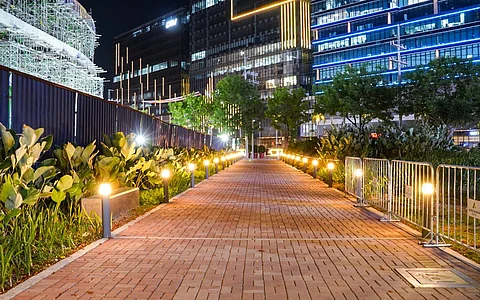
- NEWS
- the EDIT
- COMMENTARY
- BUSINESS
- LIFE
- SHOW
- ACTION
- GLOBAL GOALS
- SNAPS
- DYARYO TIRADA
- MORE

Everyday walking may enhance your physical health and well-being.
University of Miami architecture professor Joanna Lombard and urban planner Jeff Speck outlined in the research on CNU’s On the Park Bench that physical activity “decreases risks of heart disease, premature death, muscle wasting, 13 types of cancer, hypertension, type II diabetes, stroke, and depressive symptoms and increases aerobic capacity, muscle strength and mobility.”
In the hustle and bustle of a big city like Metro Manila, getting around on foot has become a daily challenge for many commuters. According to data from local civil society group Move As One Coalition, 94 percent of Filipinos walk or rely on public transportation, while the remaining six percent use their own cars.
Further data from the said organization shows Filipinos spend around 77.5 percent of their travel time walking, yet only five percent of the roads are considered safe for pedestrians. Additionally, a survey conducted by the Social Weather Stations found that 44 percent of non-home-based Filipino workers walk to work, making it the most common way to commute.
Despite these numbers, roads are still made for cars instead of the people. Most investments from both the government and some private sectors tend to go toward easing traffic congestion for private vehicles rather than improving walkways and mass transport.
While many urban areas continue to prioritize cars over people, a number of properties in the Metro offer a refreshing contrast. The thriving business district of Aseana City is designed with walkability on the top of mind. The estate is being shaped into a “15-minute City” — a vision where workplaces, shops and other essential services are all within walking distance.
Mobility is a key aspect of a great community. Opt for fitness-friendly spaces with wide, shaded walkways, bike lanes, open parks, and recreational zones that encourage you to stay active throughout the day. These features allow people to comfortably walk to dining and retail establishments, jog after or before work, or just simply enjoy a stroll, supporting convenience and fostering healthier lifestyles.
From green open spaces to integrated transport hubs, every element of a community should be thoughtfully designed to support a more livable environment.
With more walkable spaces, Filipinos can look and step forward to safer, healthier and more connected communities.
